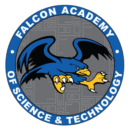
________
At Falcon Academy, we believe in nurturing creativity and artistic expression in every young mind. That’s why we are thrilled to present Art Masters Academy—an inspiring program designed to awaken the artist within every student.
Art Masters Academy is a unique initiative seamlessly integrated into the school day through engaging assemblies and interactive class sessions. Led by a dedicated art teacher, students embark on a colorful journey of creativity as they explore various art projects.
During the assemblies and class sessions, our talented art teacher presents exciting projects that capture the imagination and curiosity of our students. Students eagerly follow step-by-step instructions, creating their masterpieces while discovering new techniques and art forms. These projects encourage self-expression, innovation, and artistic growth.
Take a Look at the ART MASTERS in History
Art Master Lautrec
An Art Masters Academy storyteller will visit your school to introduce students to the art of Henri de Toulouse Lautrec. With a PowerPoint presentation, stories, music, and games, the assembly presentation will highlight Lautrec’s exciting poster art and his masterful use of the art element of line. Following the assembly, each class will have a studio art lesson related to Lautrec’s work during which they will be challenged to create their own line-based posters or portraits.
Art Master Cézanne
Art Masters scholars will be introduced to the shape-based art of Paul Cézanne. Cézanne was one of the fathers of Modern Art because of his ability to focus on shapes and forms rather than subject or detail. Whether he painted people (portraits), places (landscapes) or things (still lifes), Cézanne broke down his subjects into two- and three-dimensional forms. The studio art activity uses astrobright paper (kinder) or art tissue and starch to create their own shape-based compositions.
Art Master Monet
During the assembly, scholars will be introduced to the French Impressionist (Oscar) Claude Monet. Monet sought to capture the exact colors and shapes seen in a moment of time. This lesson is focused on color theory, introducing students to primary, secondary, tertiary, and complementary colors. Students will emulate Monet’s distinctive brushstrokes in their studio art lesson.
Art Master Homer
The American realist Winslow Homer’s prints and paintings will be the focus of this lesson. Homer believed in the importance of developing an American aesthetic and was trained in the U.S. during a time when serious artists went to Europe to study European artists and techniques. The studio art lesson finds its basis in Homer’s use of color value (the amount of lightness or darkness in a hue) found within his prints and oil & watercolor paintings.
Art Master Van Gogh
Art Masters scholars will be introduced to the Dutch painter, Vincent van Gogh, and his expressive use of the element of texture. During the assembly, students will explore Van Gogh’s masterpiece Starry Night. They get to know him by studying several self-portraits and tracking the development of his style. In their studio art activity, they will use the medium of oil pastels to create their own starry night skies.
Art Master Picasso
This lesson offers an introduction to abstract art as well as a review of the elements of art found in the works of Spanish artist, Pablo Picasso. Picasso wanted to demolish the world of traditional, realistic art, and create a new kind of art that was vibrant and alive. His exploration of shape and the passage of time led him to collaborate with other artists to develop the style known today as Cubism. Students will use their ‘right-brain’ to draw their own version of a Picasso portrait.
Did you know that America’s leading educators have identified art as a way to keep students interested in school, to develop creative thinking, to raise academic achievement, and to reinforce self-esteem?
Our students will be ‘meeting’ master artists in an Art Masters Academy lesson designed to teach children to create, to understand and appreciate works of art, and to discover different cultures.
Students will begin each lesson with an interactive assembly which will be followed up with a classroom activity taught by Art Masters Academy staff, parent volunteers, or classroom teachers. This program will involve students, teachers, and parents alike! Parents are always welcome to attend the assemblies and help with the studio art lessons.
Please support this valuable program by volunteering. For more information, please contact your student’s teacher.
Even if you cannot be a volunteer for the program, please use this information to ask your students about their experiences as part of the Art Masters Academy program.
_______________________________
